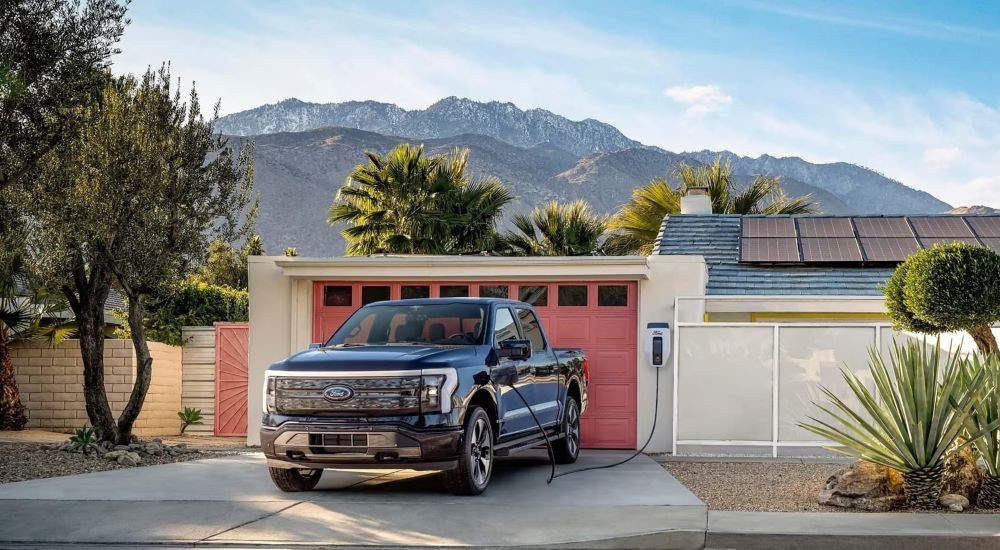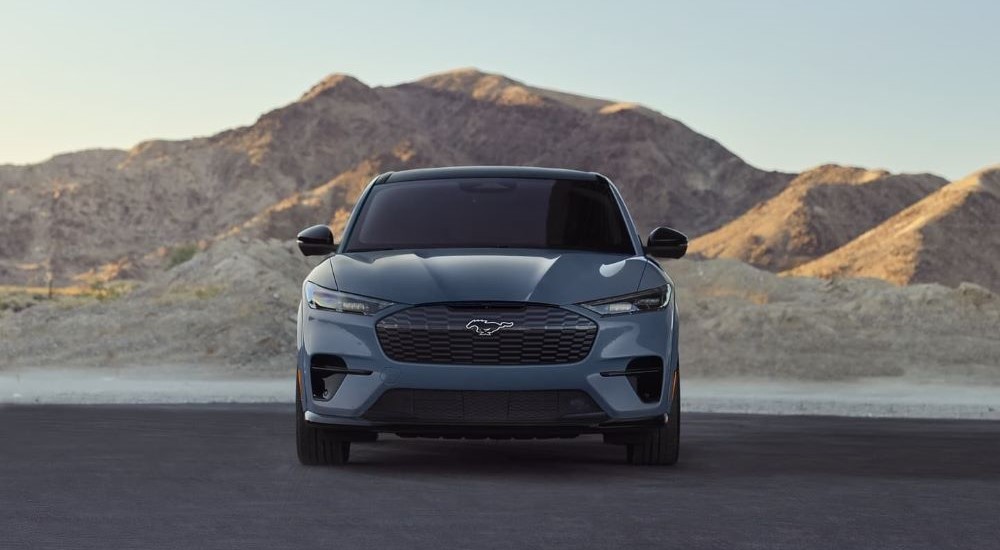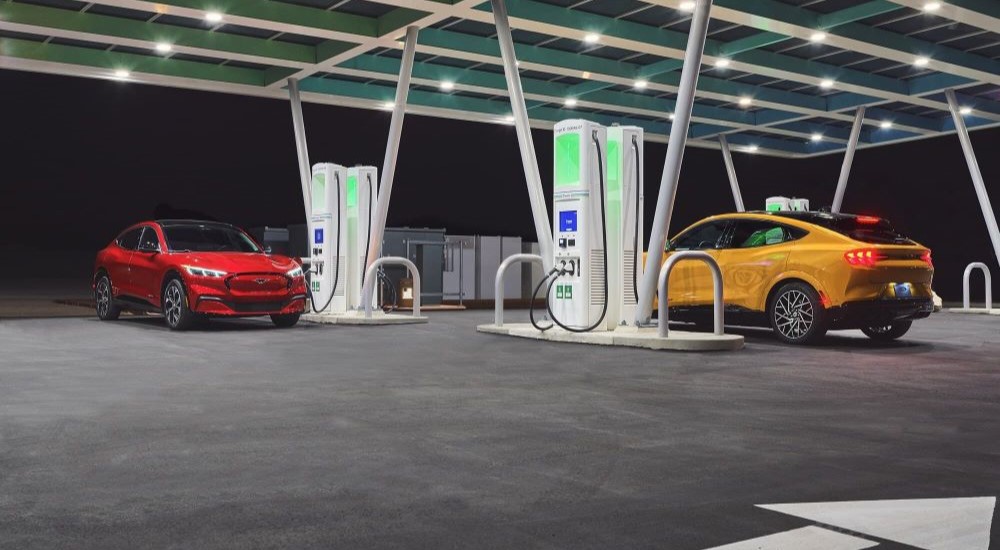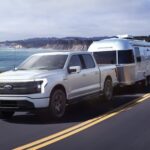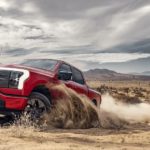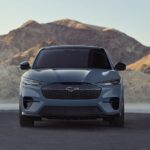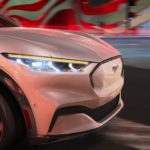The demand for innovative electric vehicles (EVs) is on the rise. This is the case for cities and even small towns throughout the United States, where citizens wish to protect their homes, their health, and the beautiful sprawls in which they go about their daily lives.
As more drivers embrace the transition to sustainable and eco-friendly transportation, the question on Ford’s mind is, “What’s next after the Lightning and Mach-E?” Ford is already showcasing serious EV abilities and does not seem willing to slow down as more buyers flock to the likes of the Mach-E and F-150 Lightning. Don’t worry, you’ll be seeing more changes coming to your local Ford EV dealership.
Ford enthusiasts and prospective EV owners alike are eagerly awaiting the next chapter in Ford’s journey to an all-electric lineup. Come along and explore the evolving landscape of electric vehicles as we shed some light on the exciting possibilities that lie ahead beyond the already impressive Lightning and Mach-E models.
The Lightning and Mach-E: A New Era for Ford EVs
Before we speed too far into the future, let’s take a moment to appreciate the groundbreaking strides that Ford has already made with the introduction of the Lightning and Mach-E. These models have entirely redefined the public’s expectations of electric vehicles, combining performance, style, and sustainability in a way that appeals to a broad spectrum of drivers.
As an all-electric version of the iconic F-150, the Ford F-150 Lightning has captured the hearts and minds of truck enthusiasts with its outstanding towing capacity, athletic design, and the convenience of a hands-free driving experience. Meanwhile, the Mustang Mach-E has successfully blurred the lines between an SUV and a sports car, giving its drivers an exhilarating performance coupled with the practicality of an electric SUV.
The success of these models has not only elevated Ford’s status in the electric vehicle market but has also set the stage for what is yet to come for EVs in general. As we look to the horizon, the next wave of Ford EVs promises to build upon this solid foundation, offering even more options for drivers seeking a greener and ultimately more sustainable driving experience.
Expanding the EV Lineup: Variety Is Key
One of the key strategies for Ford’s electrification future involves expanding its EV lineup to serve a broader audience. While the Lightning and Mach-E have already carved out their own niches, the next generation of Ford electric vehicles is likely to include options ranging from compact EVs to larger SUVs, providing choices that play to a diverse range of needs.
Compact EVs are currently gaining popularity for their efficiency, easy maneuverability, and suitability for urban living. As the demand for smaller electric vehicles grows, Ford is expected to introduce models for drivers looking for a nimbler and more eco-friendly option for everyday commuting.
Simultaneously, the SUV segment is likely to witness the arrival of new electric models designed to compete not only in terms of performance but also when it comes to spaciousness and versatility. Families and adventure seekers who value both sustainability and practicality will likely find these offerings rather appealing.
The Technology Leap: Advanced Features and Connectivity
In the constantly evolving landscape of electric vehicles, technological innovation takes a front seat when it comes to shaping life behind the wheel. Ford is expected to continue to leverage industry-leading technology in its upcoming EVs, further enhancing features like autonomous driving capabilities, advanced safety systems, and uninterrupted connectivity features.
Given the integration of artificial intelligence (AI) and machine learning, Ford’s future electric vehicles are poised to offer more intuitive and personalized driving experiences via high-tech “smart” features. Just imagine owning a vehicle that learns your unique preferences over time, adapting its settings and functions to match your particular driving style. This is indeed a glimpse into the future of automotive technology.
Enhanced battery technology will also be a strong focal point, addressing current consumer concerns related to range anxiety. Ford’s commitment to pushing the boundaries of battery capabilities will likely result in EVs with extended ranges, more rapid charging times, and enhanced overall efficiency.
Sustainability Beyond the Vehicle: A Holistic Approach
As the automotive industry pivots closer toward sustainability, Ford’s dedication to a cleaner future extends beyond the vehicles themselves. The company is likely to adopt a more holistic approach that encompasses the entire lifecycle of its electric vehicles. This includes the sourcing of raw materials, all manufacturing processes, and the eventual recycling of components from their EVs.
The construction of Ford’s EVs is likely to emphasize the use of eco-friendly materials, thereby reducing the environmental impact associated with traditional vehicle manufacturing. What’s more, innovative recycling programs may be implemented soon to ensure that end-of-life components are responsibly disposed of or repurposed.
Charging Infrastructure: Supporting the EV Revolution
To encourage an increased adoption of electric vehicles among different consumers, a widespread charging infrastructure is absolutely essential. Ford recognizes this necessity and is expected to collaborate with partners in both the public and private sectors to expand the availability of charging stations across the United States. For example, in 2023, Ford reached an agreement with Tesla to provide Ford EV owners with access to 12,000 Tesla Superchargers, in addition to over 10,000 chargers that are already part of Ford’s BlueOval Charge Network. This will make electric vehicle ownership more convenient, as it reduces the presence of range anxiety.
Efforts to increase the number of fast-charging stations along popular routes and in urban centers will address concerns about range limitations, further promoting the feasibility of electric vehicles for long-distance travel. Making charging infrastructure more readily available for suburban and even rural drivers will boost the shift toward an all-electric automotive industry. The convenience of charging infrastructure is a key factor in driving the transition towards a greener future.
Community Engagement: Building a Sustainable Ecosystem
Ford dealerships throughout the US are poised to become hubs for community engagement and education from teams of informed EV-enthusiastic personnel. Beyond just selling vehicles, these dealerships are likely to offer comprehensive support for EV owners, including maintenance services, educational programs, and events focused on promoting sustainability within the community.
By actively participating within communities of all sizes, Ford can contribute to the broader goal of building a more sustainable ecosystem. Workshops on EV technology, environmental impact, and the benefits of electric driving can help foster a stronger sense of community and empower more residents to make informed choices toward a greener tomorrow.
Expect to See a Bright Future for Ford EVs
Looking beyond the current Ford F-150 Lightning and Mach-E, the future of Ford’s electric vehicles holds immense promise. By boosting their commitment to expanding the EV lineup, incorporating advanced technology, adopting sustainable practices, and building a supportive infrastructure, Ford is poised to play a pivotal role in the ongoing electric vehicle revolution.
The anticipation of witnessing these developments is heightened by the prospect of having a Ford EV dealership not too far from home. As the automotive industry continues to evolve, so will the options available to drivers seeking a greener and more sustainable mode of transportation. The road ahead is filled with many exciting possibilities, and Ford is leading the charge toward a future where electric vehicles are genuinely a way of life.
